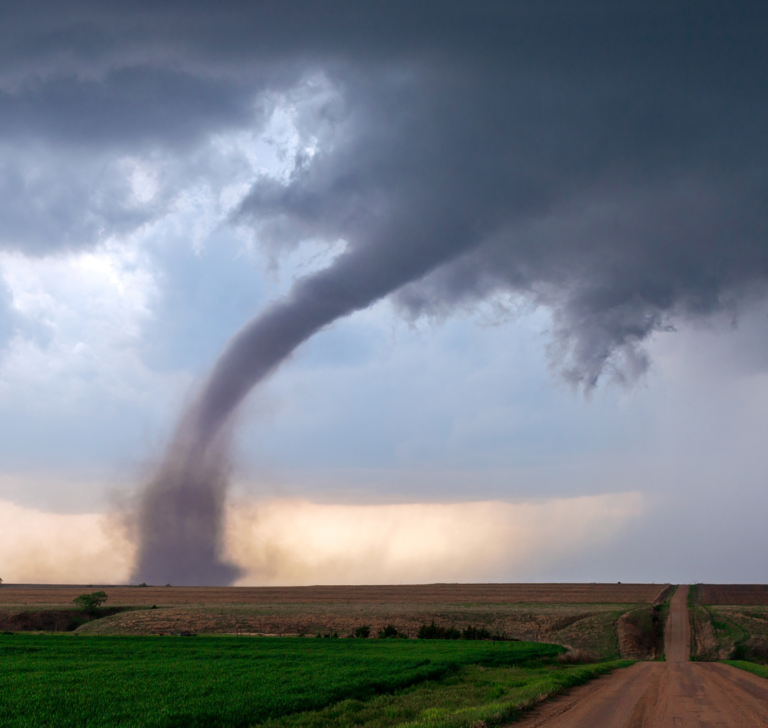For those who continue their activities during a tornado alert, there are some steps to take to protect themselves
April has begun with weather alerts in the Midwestern states of the United States. A dangerous storm system is moving through parts of the Ohio Valley and the Northeast, bringing heavy rain, isolated tornado threats, and snow. Severe weather conditions are forecasted in Ohio, Middle Tennessee, and the Southeast, with multiple rounds of storms expected throughout the day and into the night, according to reports.
The Centers for Disease Control and Prevention indicate that the safest place during a tornado is the interior part of a basement, while the least desirable is a motor vehicle. However, for those who continue their activities during this weather warning, there are some steps to take to protect themselves in case of extreme conditions. The main thing is to be familiar with tornado warning signs:
- Large hail and heavy rain
- Sudden wind
- Low, dark, rotating clouds
- Deep rumbling
- Debris swirls on the ground
Once the warning signs appear, it is crucial to stay informed through meteorological channels, radio, or mobile devices. According to the NOAA, having a plan to stay safe during a tornado is essential. When facing the risk of a tornado, finding a safe shelter and developing an action plan is fundamental.

How to stay safe while driving during a tornado?
If you are in a vehicle during warning signs or even at the onset of a tornado, the measures to stay safe include:
- Head to a shelter. Look for sturdy buildings near your location; avoid traveling long distances if possible; seek underground shelter like a basement if available.
- Don’t try to outrun the tornado. The best decision you can make is to stop driving as soon as possible; drive perpendicular to its path until finding shelter.
- If you find yourself in an area where there are no buildings available, the best way to ensure your safety is to stop and park the vehicle. Fasten your seatbelt, crouch down in the car, and cover yourself with a blanket or coat.
- Avoid seeking shelter under an overpass or bridge, as these areas are exposed to higher wind speeds and more dangerous debris.
Consider identifying large, sturdy buildings along your regular routes where you could seek shelter if you’re in your car when the tornado arrives. After the tornado has passed, precautions continue. Avoid hazardous debris such as broken glass, nails, and other sharp objects. Always stay away from fallen power lines and do not enter buildings that have suffered severe damage as they could collapse. Try to remain calm and follow your emergency plan.

The story of the first car race in Paris: a historic hit in 1894
Paris stands not only as a cultural and artistic epicenter but also as a pioneer in car racing In the history of automotive racing, Paris

Top states for driving in the United States in 2024
A WalletHub study compared all 50 states to determine the best driving conditions Road safety and quality are central concerns for drivers. And while the

Briefs: marijuana reclassification, vehicle fees, and climate grants
The trucking industry goes through new legislation, taxes and subsidies Questions about the proposed reclassification of marijuana The Owner-Operator Independent Drivers Association (OOIDA) supports the

Impact of traffic pollution: study reveals increase in blood pressure
A study from the University of Washington in Seattle reveals that the main cause of significant increases in blood pressure might be traffic-related gasses A

The benefits and careers of a Commercial Driver’s License
Having a CDL opens multiple doors within the trucking and transportation industry Having a Commercial Driver’s License (CDL) opens multiple doors within the trucking industry,

Sharing the road with a truck: steps to ensure your safety
Caution around blind spots and anticipating truck maneuvers are essential to ensuring everyone’s safety Truck drivers face significant challenges on the road due to their
